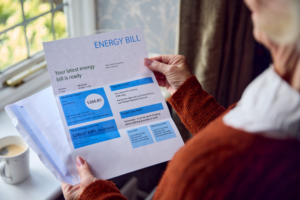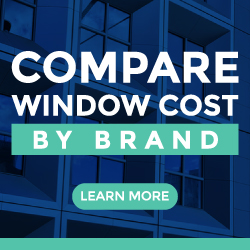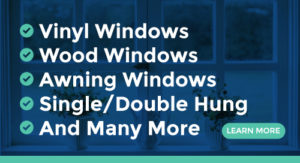
Could Your Windows Be Raising Your Energy Bill?
When it comes to trimming down your energy bills, every element of your home’s construction plays a pivotal role, especially your windows. Often overlooked, the quality of windows installed in your home can significantly influence your heating and cooling expenses. High-quality, energy-efficient windows act as a barrier against the outside climate, helping maintain a comfortable indoor temperature and reducing the workload on your heating, ventilation, and air conditioning (HVAC) system. Conversely, outdated or inefficient windows can become a conduit for heat loss in winter and heat gain in summer, leading to increased energy usage and higher bills.
In this comprehensive guide, we’ll delve into the critical role windows play in your home’s energy efficiency. We’ll uncover the signs that your windows might be contributing to higher energy costs, explain key energy ratings to consider when selecting windows, and compare the costs and materials of energy-efficient windows. Our goal is to arm you with the knowledge to make informed decisions about window upgrades that can lead to significant savings on your energy bills and contribute to a more sustainable living environment.
By understanding the impact of window quality on your home’s energy consumption, you can take actionable steps towards optimizing your energy usage, reducing your carbon footprint, and enhancing the comfort and value of your home. Let’s explore how the right windows can transform your home into an energy-efficient haven.

The Role of Windows in Home Energy Efficiency
Windows serve as a critical juncture between the interior comfort of your home and the external environment. They can either be a source of energy conservation or loss, significantly influencing your home’s overall energy efficiency. The role of windows in energy efficiency revolves around two primary factors: heat gain and heat loss.
Heat Gain and Loss Through Windows:
- Heat gain occurs when sunlight penetrates through the windows, increasing the indoor temperature. This can be beneficial in colder months but problematic during the warmer seasons, leading to increased use of air conditioning.
- Heat loss happens when the indoor heat escapes through the windows to the outside, requiring more energy from heating systems to maintain a comfortable indoor temperature during colder weather.
Impact on Heating and Cooling Costs: The efficiency of a window in preventing unwanted heat gain and minimizing heat loss directly affects the heating and cooling costs of a home. Inefficient windows can cause up to 25-30% of residential heating and cooling energy use, according to the U.S. Department of Energy.
Windows with single-pane glass or poor insulation properties are particularly prone to causing excess energy consumption. In contrast, energy-efficient windows designed with multiple layers of glass, specialized coatings, and improved frame materials can significantly reduce energy waste.
Enhancing Home Energy Efficiency: Investing in energy-efficient windows can enhance your home’s comfort, reduce your carbon footprint, and lower your utility bills. These windows are designed to:
- Reflect infrared light, keeping heat inside during winter and outside during summer.
- Allow for natural light, reducing the need for artificial lighting.
- Reduce condensation and the potential for mold and mildew growth.
By understanding the critical role windows play in your home’s energy efficiency, you can make informed decisions about upgrades or replacements that will contribute to a more energy-efficient and comfortable living environment.

Signs Your Windows Are Impacting Your Energy Bills
Recognizing the signs that your windows are contributing to higher energy bills is the first step toward improving your home’s efficiency. Here are key indicators to watch for:
Draftiness and Air Leaks: Feeling a draft even when windows are closed is a clear sign of air leaks. These leaks allow warm or cool air to escape, making your HVAC system work harder to maintain the desired temperature, thereby increasing your energy bills.
Condensation Between Panes: Double or triple-pane windows with condensation between the glass layers indicate a seal failure. This compromises the window’s insulating properties, leading to increased energy consumption.
Difficulty Heating or Cooling Rooms Evenly: If certain rooms are harder to keep warm in winter or cool in summer, it could be due to inefficient windows. Uneven temperatures often result from poor insulation and can lead to overuse of heating and cooling systems.
Age and Condition of Windows: Windows that are old, warped, or damaged are likely not energy efficient. Over time, window technology has improved significantly, and older models are more prone to problems that can impact your energy bills.
Identifying these signs early can help you decide when it’s time to consider upgrading your windows to more energy-efficient models. Doing so not only reduces your energy bills but also improves the comfort and value of your home.

Understanding Window Energy Ratings
When shopping for energy-efficient windows, it’s crucial to understand the energy ratings that indicate a window’s performance. These ratings, established by certifying bodies such as the National Fenestration Rating Council (NFRC) and ENERGY STAR, help homeowners compare products based on their energy efficiency. Here are the key ratings to consider:
U-factor (U-value): This rating measures the window’s insulation effectiveness or how well it prevents heat from escaping. The lower the U-factor, the better the window insulates. For colder climates, a U-factor of 0.30 or lower is recommended.
Solar Heat Gain Coefficient (SHGC): SHGC indicates the fraction of solar radiation admitted through a window, either directly transmitted or absorbed and subsequently released inward. It measures how well the window blocks heat from sunlight. The lower the SHGC, the less solar heat the window transmits, which is particularly important in warmer climates to reduce cooling needs.
Energy Star Ratings: ENERGY STAR is a government-backed symbol for energy efficiency, providing simple, credible, and unbiased information that consumers and businesses rely on to make well-informed decisions. Windows that are ENERGY STAR certified meet strict energy efficiency guidelines set by the U.S. Environmental Protection Agency. Choosing ENERGY STAR-certified windows ensures high performance in reducing energy bills and environmental impact.
Understanding these ratings allows you to select windows that best fit your home’s geographic location and climate, optimizing energy efficiency and comfort. Energy-efficient windows might have a higher upfront cost but can result in significant savings by reducing heating and cooling costs over time.

Types of Energy-Efficient Windows to Consider
Selecting the right type of energy-efficient windows can significantly impact your home’s energy performance and aesthetic appeal. Here’s a guide to understanding the different options available:
Double vs. Triple-Pane Glass:
- Double-Pane Windows consist of two glass panes with a space between them, typically filled with air or an inert gas like argon. This design reduces heat loss and gain, making these windows much more energy-efficient than single-pane windows.
- Triple-Pane Windows take it a step further by adding an additional layer of glass and gas fill, offering superior insulation. They’re especially beneficial in extremely cold climates for their ability to minimize heat escape.
Frame Materials: The material of the window frame plays a significant role in its overall energy efficiency.
- Wood Frames offer natural insulation and are effective at reducing heat transfer. However, they require more maintenance to protect against weathering and thermal expansion.
- Vinyl Frames are low maintenance and provide good insulation. They are made from PVC with internal chambers that help reduce heat transfer and condensation.
- Fiberglass Frames offer the best insulation among frame materials and are durable, low maintenance, and can withstand temperature extremes.
- Aluminum Frames are strong, but they conduct heat, making them less energy-efficient unless they include a thermal break.
Special Coatings and Gases Between Panes:
- Low-Emissivity (Low-E) Coatings are thin metallic layers applied to glass that reflect infrared light, keeping heat inside in winter and outside in summer. They also protect against UV light, which can fade fabrics and furnishings.
- Gas Fills: Argon and krypton gases are often used between panes in double and triple-pane windows because of their higher insulation properties compared to air.

Costs and ROI of Energy-Efficient Windows
Investing in energy-efficient windows involves understanding their upfront costs, the potential for energy savings, and the return on investment (ROI) you can expect. Here’s a breakdown to guide your decision:
Average Cost Ranges:
- Double-pane windows typically cost between $450 to $600 per window, including installation. Prices vary based on frame material and size.
- Triple-pane windows range from $500 to $1,080 per window, reflecting their higher efficiency and construction costs.
- Frame materials also influence the overall cost. Vinyl frames are generally the most cost-effective, while fiberglass and wood frames are at the higher end due to their superior insulation properties and aesthetic appeal.
Energy Savings: The energy savings from installing energy-efficient windows depend on several factors, including your home’s existing windows, the climate, and energy rates in your area. On average, homeowners can expect to save about $126 to $465 a year on energy bills by replacing single-pane windows with Energy Star-certified windows. For double-pane, clear glass replacement windows, the savings are between $27 and $111 a year. While these numbers provide a general guideline, actual savings will vary.
Increased Home Value: Beyond energy savings, energy-efficient windows can increase your home’s value. Prospective buyers value energy efficiency, and upgraded windows can make your home more attractive on the market. According to the National Association of Realtors, homeowners can expect to recoup about 70% of their investment in energy-efficient windows in terms of increased home value.
Calculating ROI: To calculate the ROI of energy-efficient windows, consider the initial investment (cost of the windows and installation), annual energy savings, and increased home value. While the upfront cost may be significant, the reduction in energy bills, combined with the potential increase in property value, contributes to the overall ROI, making energy-efficient windows a financially sound investment over time.
Government Incentives and Rebates: It’s also worth exploring government incentives and rebates for energy-efficient home improvements. Many local and federal programs offer tax credits or rebates that can offset the initial costs of installing energy-efficient windows, further enhancing the ROI.
Upgrading to energy-efficient windows is an investment in your home’s future. Not only do they offer significant savings on your energy bills by reducing heat gain and loss, but they also enhance indoor comfort, contribute to a healthier environment, and increase your property’s value. With the wide range of options available, from double and triple-pane windows to various frame materials and advanced coatings, homeowners can choose solutions that best meet their needs and preferences. Invest in your home’s energy efficiency today. Get quotes for replacement windows, make informed choices, and start enjoying the benefits of reduced energy bills and enhanced comfort in your home.



Leave a Reply